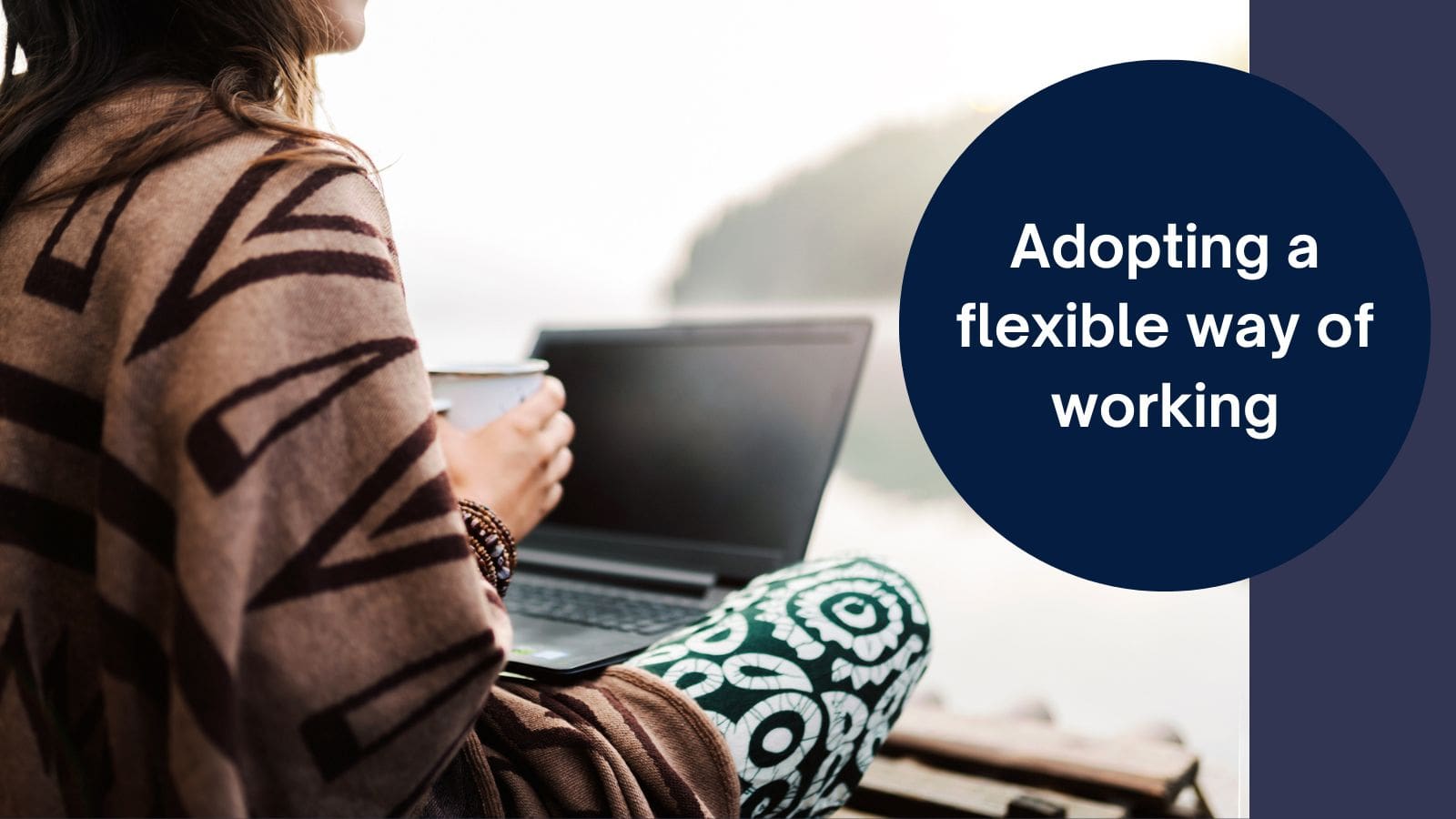Embracing a hybrid working model

Hybrid working emerged through the enforced 'work-from’-home' policy during the pandemic, where companies had to allow their people to work from home if it was feasible. This way of working has become a growing trend and has been a considerable contributor to 'The Great Resignation'. Also known as the Big Quit, this is an ongoing trend of employees voluntarily leaving their jobs, a significant driver of which is the desire of people to work for companies with better remote-working policies. As a result, companies are encountering an unmistakable shift in power, with employees happy to look for alternative employment opportunities if their working policies do not meet the individual's needs.
The CIPD's Embedding new ways of working post-pandemic report showed that some 40% of employers said they expected more than half their workforce to work regularly from home. According to the Office of National Statistics, around 5% of the workforce worked mainly from home prior to the pandemic. This percentage increased significantly with the spread of Covid-19 and government mandates for people to stay at home. However, according to CIPD research, 65% of employers either did not offer regular working from home or only offered it to 10% or less of their workforce before the pandemic. After the crisis, this 65% is expected to fall dramatically to 37%. This represents a significant shift in the ways of working, which people professionals need to manage carefully.
According to Gartner, remote work, once a consideration for many organisations but rarely a priority, has become a health and safety imperative. This leaves HR leaders with a series of critical decisions concerning which parts of the workforce can work remotely, which should stay remote and how their organisations should navigate follow-on changes, such as facilitating collaboration and building relationships. The Gartner report 'Establishing a Remote and Hybrid Workforce' highlights that rather than considering getting employees back to the office, organisations required a new framework to answer the question of what touchpoints in the organisation require in-person interaction and exploring new ways of working.
While some employees want to work from home regularly, most prefer flexible working options with a balanced mix between home and office work. With the rapid rise of remote work and the numerous real-time, cloud-based collaboration tools, a working arrangement that involves splitting work time between a traditional office workplace and an employee's home or chosen workplace has emerged.
This trend has led to a new term: hybrid working. Although not every organisation is able or willing to adopt a hybrid work model, many companies have considered it as a way of preserving their pre-pandemic office work cultures and office space investments while meeting employee expectations for greater flexibility. With a hybrid work model, employees have greater flexibility with regard to where they can work productively. In addition, the workplace is no longer limited to an office's 'four walls'. Instead, there is an ecosystem of employees working from various locations.
However, the introduction of hybrid working patterns demands a significant culture shift. Organisations have to adapt working policies and practices to support this, which can make greater demands on the managers and organisations than the shift to total remote working.
Obviously, every employee's needs are unique. Therefore, hybrid working is not for everyone, and neither is working in the office. However, a flexible working arrangement with the ability to work from home (or a suitable remote location) and in the office has enabled many individuals to return to work when exclusive office work prevented them from working prior to the pandemic.
As a result, many organisations are now considering what 'hybrid' means for them, how they might meet this new employee demand, and what will need to be in place for these new ways of working to be effective.
When properly implemented and supported, hybrid working policies benefit both employees and employers alike. From an employee perspective, this can include a better work–life balance, improved well bring, greater ability to focus with fewer distractions, more time for family and friends, saved commuting time and costs, IT upskilling, and increased motivation levels. Similarly, the employer can reap the benefits of a hybrid working policy with increased employee job satisfaction and happiness, reduced staff absence and turnover rates, realising savings on office space and a more motivated workforce.
At Tugela People, we have fully embraced the hybrid working model that enables employees to work from home or a suitable remote location and occasionally (when required to attend meetings or the desire to collaborate face-to-face with colleagues) base themselves at the office.
In light of this, Tugela People decided to reduce their office space, as the existing office was surplus to requirements, and we have now relocated to a smaller office. Thomas Schilling, Managing Director of Tugela People, said, "This new way of working has provided the team with more flexibility and the opportunity to achieve a better work/life balance. It has also facilitated the further reduction of the company's carbon foot, an all important element of our ongoing CSR program.”
Although several types of hybrid work models have emerged under this new approach to working, Tugela People have adopted a remote-first hybrid work model. Employees can work remotely most of the time with occasional visits to co-working spaces or the office for team building, collaboration, and training. By incorporating this hybrid working model, the team can get the best of both worlds. Employees can innovate together and develop personal relationships while also being able to work remotely when deep concentration is required.
The new Tugela People office address is: Scorpio F.1, Linford Wood Business Park, Sunrise Parkway, Milton Keynes, United Kingdom MK14 6LY

